
Lunch by the lakeside in sunny Vienenburg left us energised and eager to explore the pretty region we found ourselves in — the northern edge of the Harz mountains. We learnt from a local that a short 10-minute train journey would deliver us to the UNESCO World Heritage listed, medieval town of Goslar. Afternoon plans sorted.
Founded in 922 CE, Goslar is famed for its magnificent gates and old city walls, its timbered guild houses, the medieval Imperial Palace and Romanesque churches: the perfect recipe for getting lost on an afternoon of exploration.
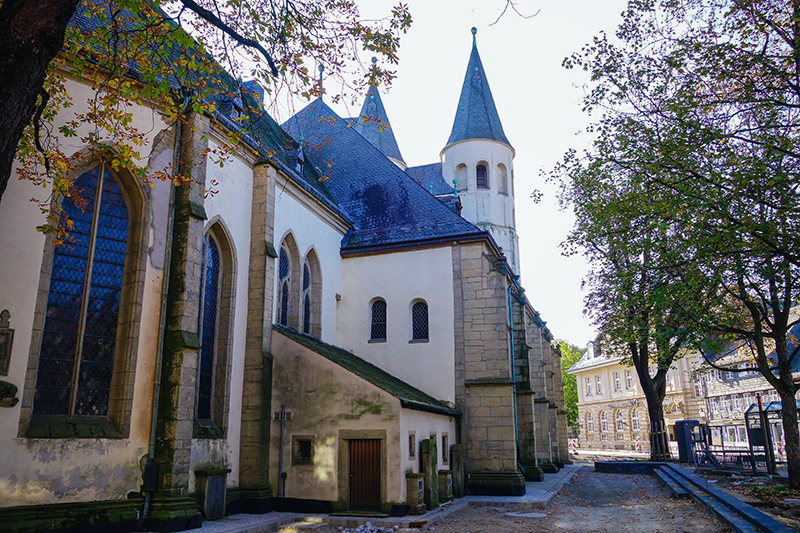
Unbeknownst to us, the annual ‘Imperial Market’ was taking place in the market square that same weekend and we were greeted with a colourful display of historic crafts, food and entertainment from the region when we stumbled upon the centre of the old town.

The warm rays of the late afternoon sun filtered through the smoky haze that had filled the old square and the smell of charcoals caught our noses, luring us in for a perfectly-timed snack.
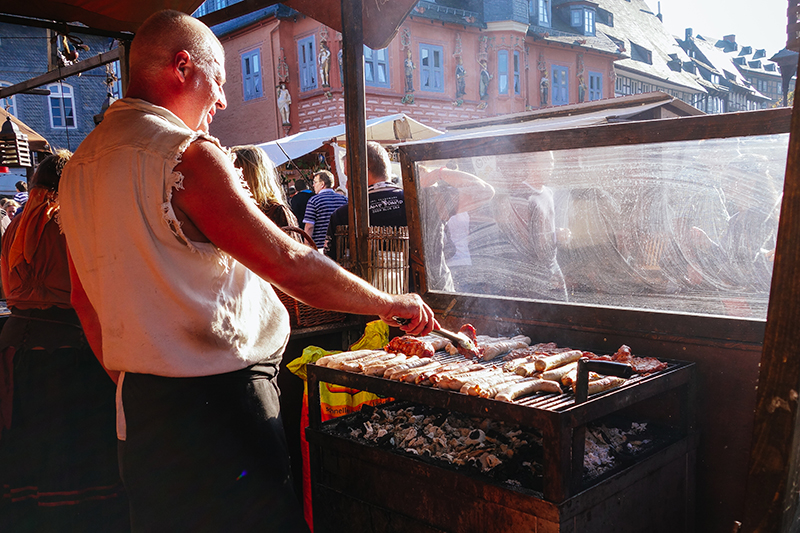

Energy regained, it was time to explore the old town further. Isn’t this just the most delightful little historic town to get lost in? With narrow, cobblestoned streets, steep church spires and half-timbered architecture everywhere you look, combined with the fact that this town was left completely unscathed by WWII, a visit to Goslar makes for a very enchanting afternoon indeed.
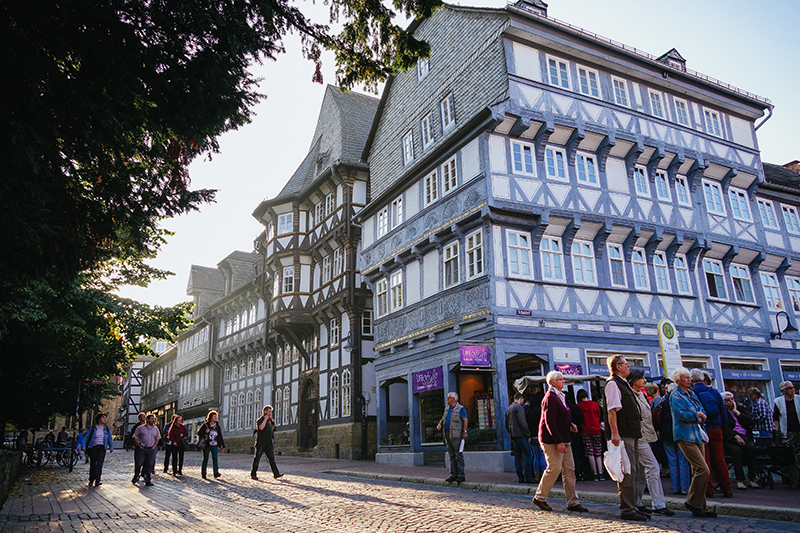
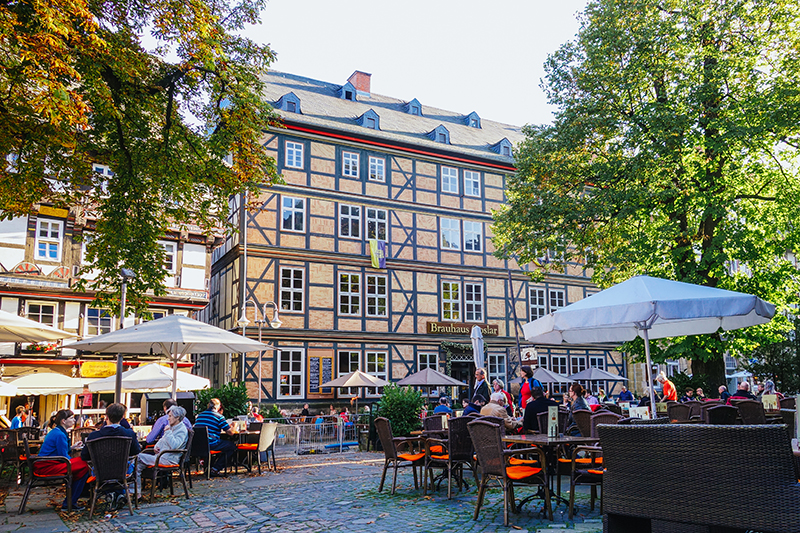




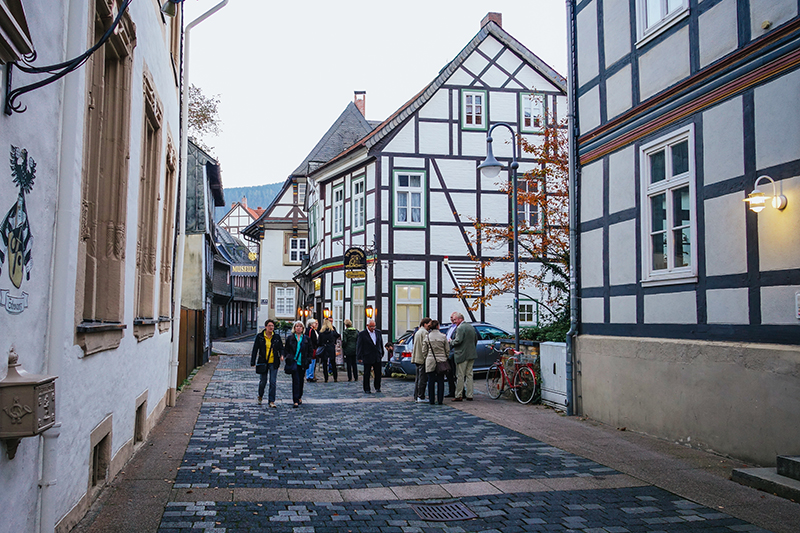
Getting to Goslar:
Goslar is best accessed by regional trains from Hanover or Braunschweig. If you are travelling from another city, expect to have to make a connection. Bus transport as well as independent driving is also possible and both are very convenient options also as Goslar is well-connected to other cities by Autobahn.
Don’t miss:
One could spend hours getting lost in the UNESCO listed old town, admiring all of the pretty architecture. Due to conservation efforts, over 1,500 half-timbered houses still exist within the old city walls. If you want more of a direction for your wanderings, don’t miss:
1. Kaiserpfalz (Imperial Palace)
Constructed between 1040 and 1050 CE, the imposing Kasierpflatz is located towards the southern end of the old town. This is a must for any visitor to Goslar. 200 years of German history was written here during numerous imperial assemblies.
2. Marktplatz (Market Place)
The Marktplatz is a beautiful open square lined with little cafes and shops. Markets and festivals are held here regularly.
3. Rathaus (Town Hall)
Located on the western side of the Marktplatz, the Rathaus is an architectural highlight, dominating the square. Dating from the 15th Century, the interior boasts intricate wood carvings and high ceiling paintings.
4. Marktkirche (Market Church)
West of the Rathaus, Goslar’s Marktkirche is a stunning example of Late Romanesque architecture, it’s semi-circular arches and large towers dominating the townscape.
5. Bell and Figure Show
Four times a day at 9:00, 12:00, 15:00 and 18:00, all eyes turn to the east side of the market square for the short, bell-chiming and mining figure display, signalling the time of day.
6. Kasierworth
This bright pink, former guild house is undoubtedly one of the most impressive structures on the square and is a testament to the wealth of this merchant family at the time. Nowadays, it operates as a hotel.
For more suggestions on Goslar’s many attractions, visit the Goslar Tourism website.

Isn’t it a treasure to discover such a wonderfully preserved medieval town? Have you discovered some others? Let us know where they are in the comments below!





Woah that looks so beautiful! I love the architecture! Lovely photos once again 🙂
——————
21 year old travel blogger
//the-living-spree.blogspot.co.nz/
Thank you Ali! It truly is one of the prettiest little towns I’ve been to 🙂